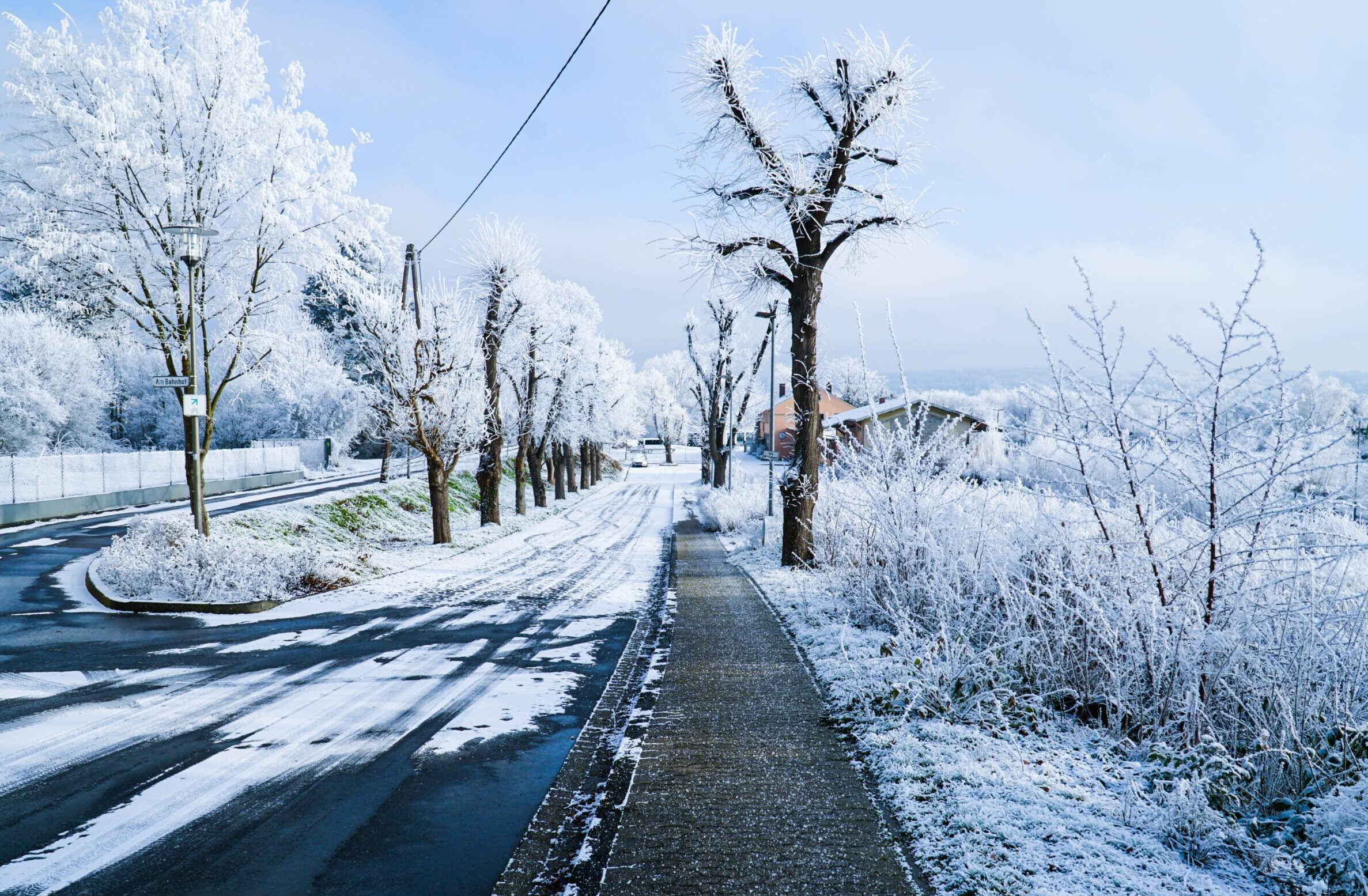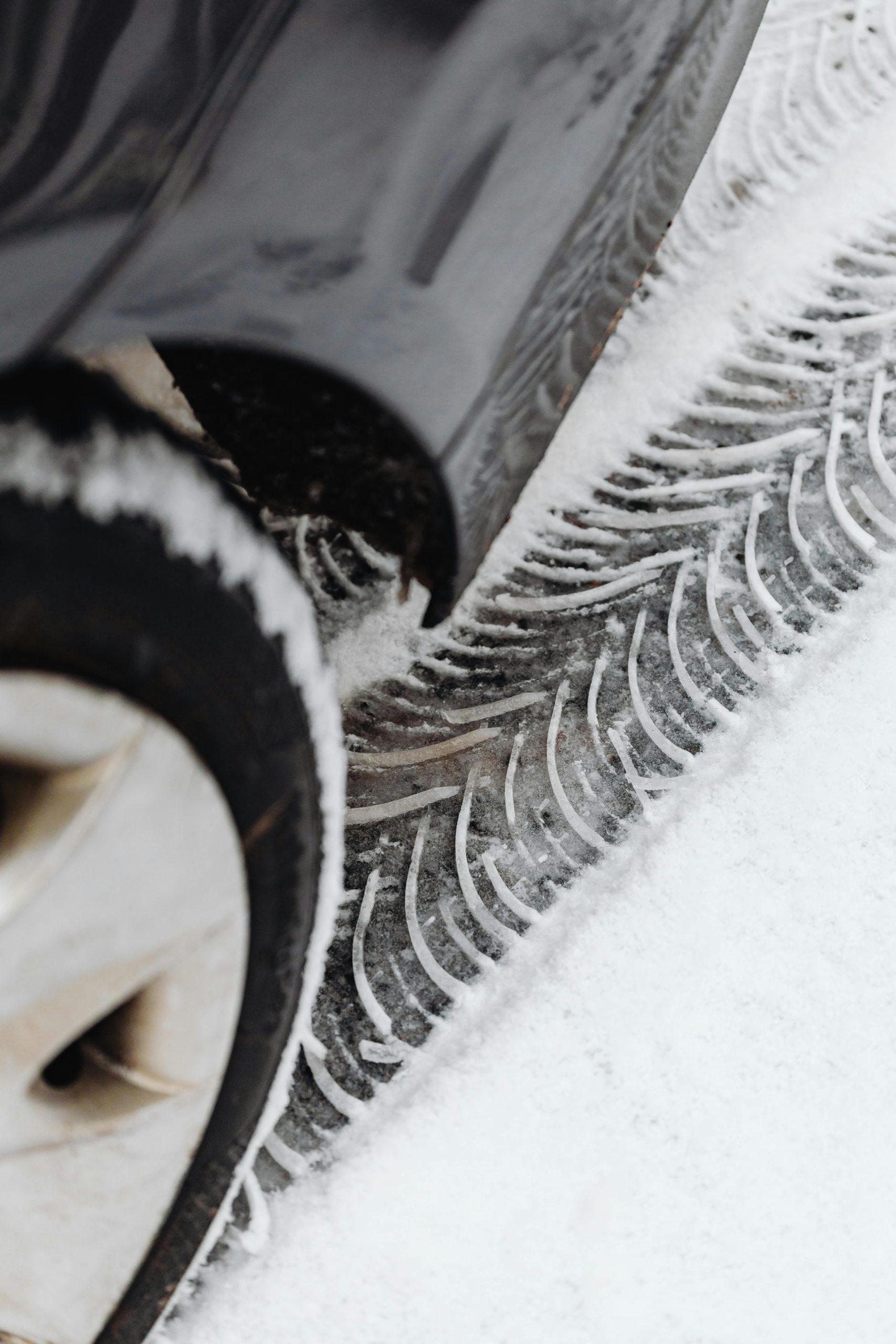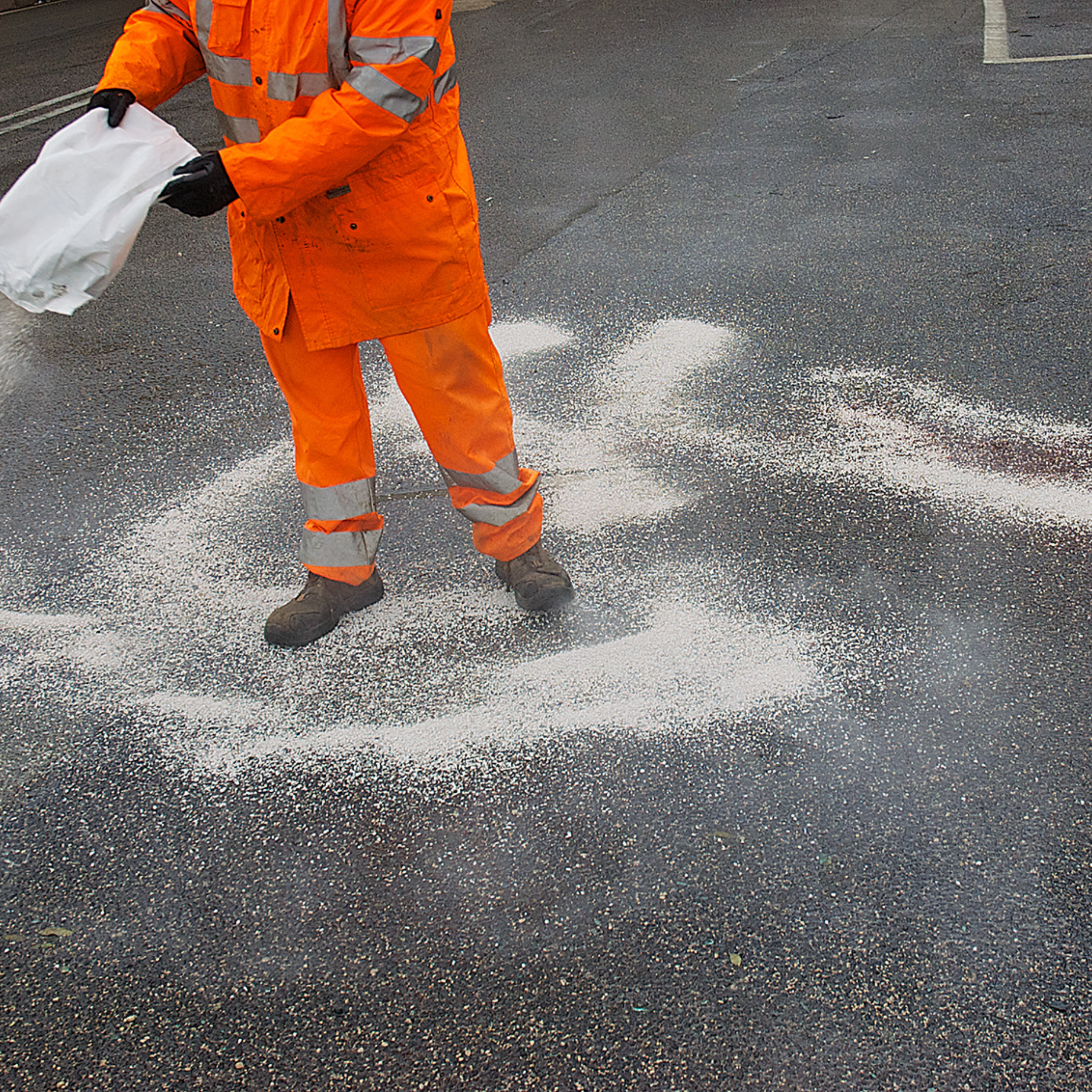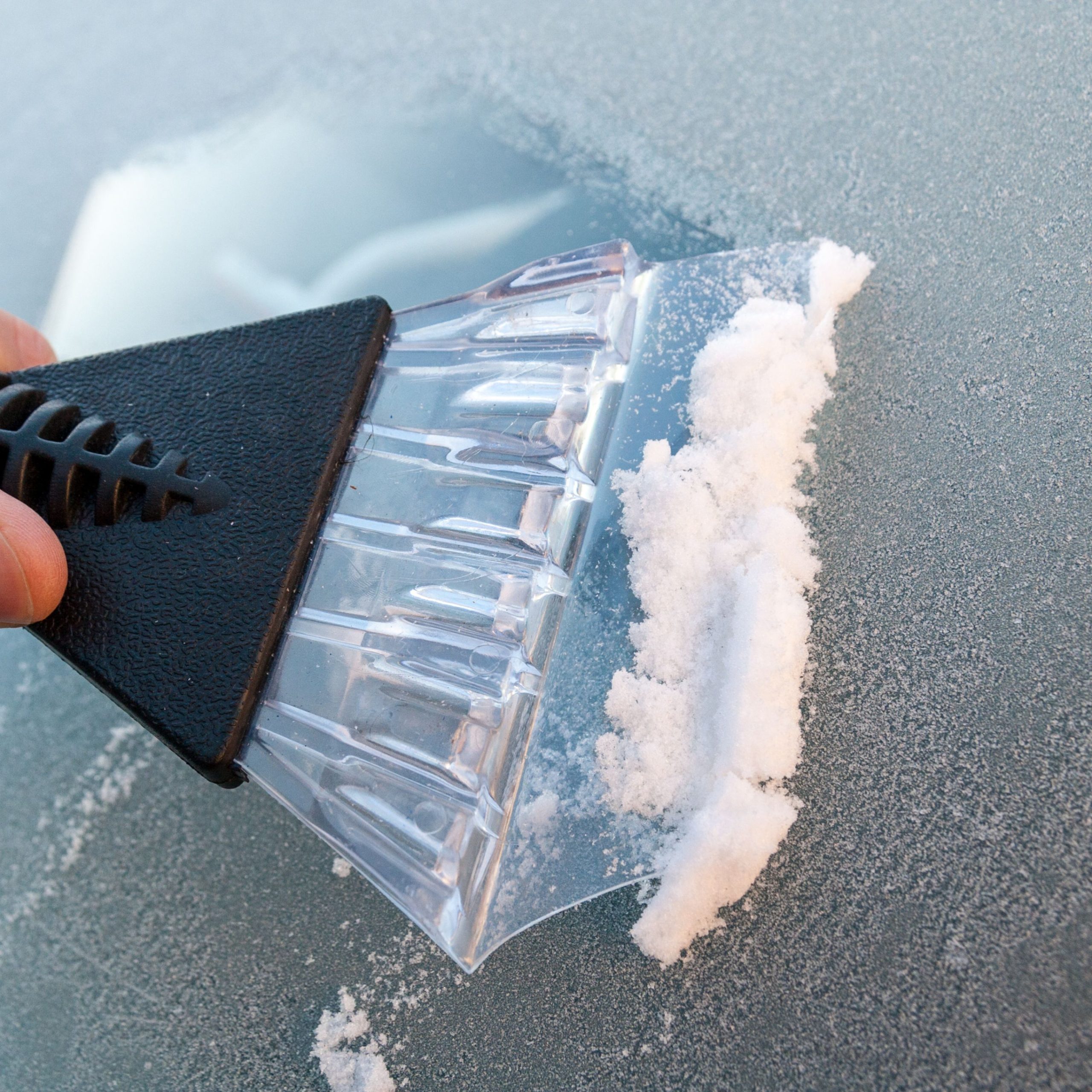Gritting roads is essential during the winter months in the UK. Knowing how gritting works as a business owner can ensure the roads and pathways around a premises are safe for drivers, cyclists, and pedestrians.
The process of gritting involves spreading salt or grit on the road surfaces to prevent ice. It’s something we take for granted until a gritted road is really needed. But it’s actually a pretty complex process and requires a lot of forward planning.
Here’s a little insider information on how roads are gritted in the UK.
Who is responsible for road gritting in the UK?
Public roads must be maintained, which includes reducing the risk of skidding on ice and snow.
In the UK, gritting is typically carried out by local authorities or private contractors who are responsible for maintaining the roads. Road gritters are the unsung heroes of the highways. With little fanfare, they drive out, sometimes at night, to keep our roads safe.
As roads are public areas, they can be a liability to public authorities, private companies and the community. Gritting is normally carried out by Highways England in more rural areas, and local authorities in more urban areas.
UK councils are responsible for around 225,000 miles of road and it could cost hundreds of millions of pounds to grit every one. Some roads are too narrow for gritting lorries to navigate. Therefore, some areas are provided with gritting bins for residents to do it themselves.
Councils will usually hire contractors to grit A roads, B roads and major bus routes. They also tackle some steep residential roads, access routes to some schools, and busy footways in town centres when ice or snow is likely to remain for more than 24 hours.
But motorists and pedestrians are not the only people to have to deal with bad weather in the UK. So, it’s the responsibility of organisations and businesses to keep roads clear and safe as well. If they don’t, it could result in a business being sued if an accident occurs on their premises.
When do the roads need gritting?
Contractors are informed by the Met Office on weather forecasts. They report when freezing temperatures will hit local areas.
It may come as a surprise to the general public when snow falls or ice forms. But, those involved in road gritting know well in advance and are prepped well before ice and frost are even thought of by most.
How gritting works is a precise science. Grit is usually only applied when the road surface temperature could fall below 1°C. The air temperature may not be the same as the ground temperature. This is because the ground preserves heat for longer than objects do such as vehicles.
Exposed areas, roads lower than land on either side, and areas sheltered from wind are more likely to have lower ground temperatures. Therefore, they’re more vulnerable to frost and icing over.
Ground surfaces hold warmth at the beginning of winter so frosts and ice are less likely if there has been a warmer-than-normal autumn. But as winter goes on, it’s more and more likely that ice and frost will form. And ice and frost can be a persistent problem throughout spring if we’re still having cold spells.
How does road gritting work?
How gritting works depends on a few varying factors. The process commonly begins when weather forecasts predict that temperatures will fall below 1°C, or if there is a risk of snow or ice due to moisture levels. Gritting teams will then deploy their vehicles. These vehicles are fitted with spreading equipment to treat the roads with salt or grit. Some gritting is done by hand and some is distributed mechanically.
The salt or grit is usually spread using a spinner, which is a device attached to the back of the gritter to distribute the salt or grit across the road surface. The amount of salt or grit used can vary depending on the severity of the weather conditions and the volume of traffic on the road.
The salt used for gritting is typically rock salt, which is mined from underground deposits. Rock salt is effective at melting ice and snow because it lowers the freezing point of water. When salt comes into contact with ice or snow, it causes it to melt and form a brine solution. This helps to prevent further ice from forming.
In addition to spreading salt or grit, gritting teams may also use other methods to improve road safety during the winter months. This can include clearing snow from the roads, deploying snowploughs, and using snow blowers to clear footpaths and cycle lanes.
What is road grit made of?
Grit is most commonly made from salt crystals. These crystals are formed in underground salt beds in what are known as salt mines, of which there are many in the UK. Salt from Egypt and the Mediterranean binds well for combatting bad weather.
When salt and grit are spread across roads and pathways, they combine with moisture and produce a solution that has a lower freezing point than water. This is how ice, frost and snow settling is prevented.
In some cases, salt crystals can cause havoc in high-footfall areas. They can create slip and trip hazards, not to mention producing an unattractive mess inside a building. They can also become a problem where mechanisms are used externally, such as sliding doors.
In locations such as these, a brine solution may be used. Brine solution is made from a unique mixture of sodium chloride and water. The solution creates a barrier between the ground and snow or ice, preventing them from forming.
In conclusion…
The process of how gritting works in the UK ensures that the roads are safe for all road users and pedestrians.
The icy roads can be treacherous, causing accidents and delays. Without gritting, the roads would become impassable, causing chaos and frustration for drivers.
Products used to grit roads usually consist of salt crystals, but brine solutions can be used in cases where crystals will cause additional problems.
The process requires careful planning, effective coordination, and the use of specialist equipment to ensure that the roads are treated in a timely and efficient manner.
Businesses and organisations are often responsible for the safety of their own premises. This legally protects them against any accidents when customers, clients, guests, suppliers, or employees are using their site.






